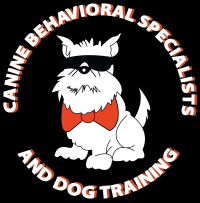Why do dogs bark and how do I make them stop?
This is a question I seem to get a lot.
Dogs bark for a variety of reasons.
Dogs can bark from boredom, as a reaction to noises, when they see a running squirrel, when people or animals are in their “territory” or because another dog in the neighborhood is barking.
To correct the problem you’ll need to isolate the cause.
First: Do Some Detective Work
Stop, look, and listen to what your dog and your neighbors are telling you about his behavior. The problem may be very different than what you think it is. Find out:
- What time of day your dog is barking?
- How long after you have left the house does he begin barking?
- How many hours a day does he bark?
- What place in the house or yard is he most likely to bark?
- What environmental factors are most likely to trigger barking (squirrels, mail delivery, doorbell)?
Territory Barking
Your dog may be guarding his perceived territory. If that’s the case, he will bark whenever he sees an “intruder” and his body posture will be threatening (head, ears and tail held high).
You may have taught your dog that you appreciate his protective behavior. To correct his you will need to do the following:
- Three bark limit – teach your dog he can bark no more than three times at anything and then he needs to stop.
- Arm yourself with treats or toys that your dog likes.
- When your dog barks three times, quietly say the word ‘quiet’ and put a treat under his nose like a magnet and turn him towards you with it.
- Give him the treat.
- Repeat this several times. After three to five days of doing this, say ‘quiet’ when your dog barks without using the treat to move him. If he turns toward you on his own, give him lots of treats.
- Desensitize your dog to what is making him bark. If he barks at people passing by his property, he needs to learn that they are not intruders and pose no threat.
- Recruit a few friends to help you teach this lesson. Get your friends to come over one at a time and walk near the yard.
- Ask them to stand far enough away that the dog isn’t barking
- Throw treats to him and tell him “good dog.”
- Have your friend gradually decrease his distance until he can walk back and forth in front of your yard without your dog barking. Once your dog stops barking at your friend, have your friend deliver yummy treats to the dog.
- Repeat this with another friend. It may take several days or weeks to get this behavior under control.
If your dog acts aggressively (barking, growling, baring teeth, hackles up) please call me. - Neuter your dog. Having your dog neutered will reduce the hormonal component of territorial behavior.
Fear barking
Your dog may be afraid of noises or events. If that’s the case, the solution is different from territorial barking. If your dog is barking out of fear, you will notice it occurring most frequently when he hears loud noises such as thunder and fireworks. His body posture will be very low, with his ears down and tail tucked. To correct this problem:
- Keep your dog safely indoors, especially during the time of year when fireworks and thunderstorms are most common. While he’s learning to be less afraid, keep him in a quiet room, such as a bathroom or basement, with a fan and/or radio on to help muffle the noises from outside.
- Desensitize your dog to the noises or events that are frightening him.
- Recognize Separation Anxiety.
Separation Anxiety
Your dog may have separation anxiety if he barks, howls, or makes noise after you leave for work, and shows a strong attachment to you. He will follow you from room to room, pant or act stressed as you get ready for work every morning, and may scratch or claw at the doors. Dogs that suffer from separation anxiety need confinement to feel safe. A crate is a good tool to use when your dog exhibits this behavior. He needs a crate big enough for him to sit, lay down, stretch, and turn around comfortably. For more on Separation Anxiety, click HERE
Barking Prevention Collars
In some situations you may need to use “stronger medicine” – such as when you have a deadline for curbing the problem. In that case, there are some specialty collars available.
The main drawback to any type of bark collar is that it doesn’t address the underlying reasons for the dog’s barking. You may be able to eliminate the barking, but the problem will still be there under the surface and may “ooze” out into other unwanted behaviors. If you decide to use a bark collar, you must use it in conjunction with behavior modification. Never use a bark collar of any kind on a dog with separation anxiety or fearful behavior.
- Citronella Collar: This collar sprays citronella oil up towards your dog’s face whenever his barking triggers it. This type of collar is considered humane and has an 88% success rate (far higher than the other collars).
- Sound Collar: This type of collar emits a high frequency sound that is intended to disrupt the dogs barking whenever it is triggered. Some are activated by the dog’s bark and others are hands held and activated by the person. The success rate for this type of collar is relatively low.
If you need additional help with a barking dog, leave me a comment below. You can also ask on my Facebook Page.
